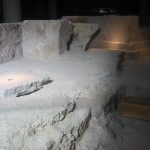THE PORTUGUESE DELEGATION WILL SHARE EXPERIENCES WITH LOCAL MUSIC CENTRES

A group of 20 Portuguese students and their teachers from the Orfeão de Leiria (Portugal) will be in Llíria these weeks participating in the Erasmus+ programme with the local Professional Conservatory of Music.
This delegation was received, in Ca la Vila, by the mayor Joanma Miguel and the mayor of Artistic Education, Paco Garcia, along with members of the Municipal Corporation, within the institutional program of activities that will develop over these days.
Councillor Paco García pointed out that this type of exchange “is the result of the work carried out by the Conservatory’s management, which has designed a series of internationalisation activities with Portuguese and Italian cities, in which the students of the Llíria centre have already carried out various mobilities during the year 2022”.
During these weeks, the students from Leiria, which is also a UNESCO Creative City in the field of Music, will be participating in meetings with other music schools, as well as exchanging experiences with musicians and students from local music societies.
For García, this new initiative, which has been started by the Llíria Conservatory, “has helped young musicians to have their first international experience and get to know other cultures and methods of musical learning, in this case with neighbouring countries of the European Union such as Leiria in Portugal and Bologna in Italy. As well as to raise awareness of the musical, touristic and cultural potential of our city”.








